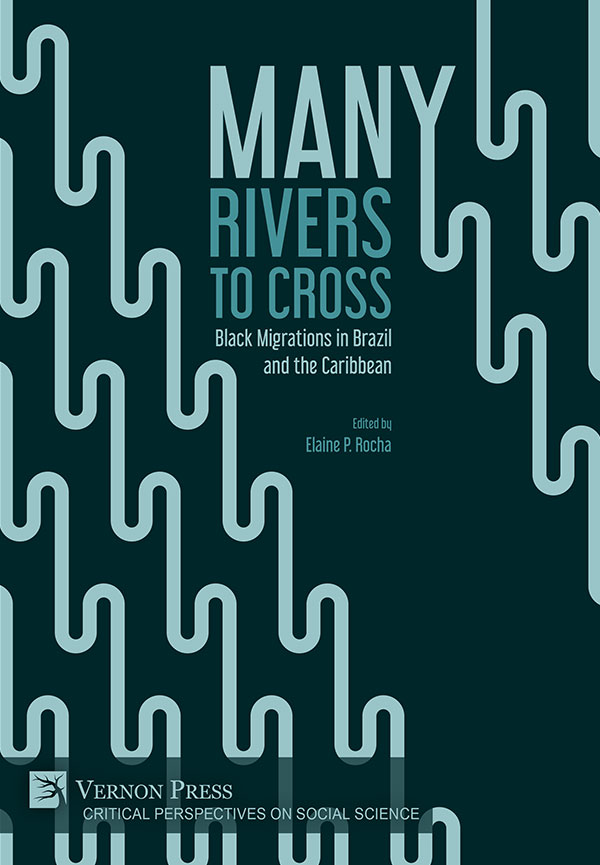Papiamentu and the Brazilian Connection Established through the Sephardic Jews (Papiamento y la conexión brasileña establecida mediante los judíos sefardíes)
Marco A. Schaumloeffel
Article published in English in Revista Letras, Universidad Nacional Costa Rica

Schaumloeffel, M. (2020). Papiamento y la conexión brasileña establecida mediante los judíos sefardíes. LETRAS, 1(67), 75-89. https://doi.org/10.15359/rl.1-67.4
Links: Schaumloeffel – Papiamentu and the Brazilian Connection Established through the Sephardic Jews – Letras Feb2020
Abstract
This study examines the linguistic contact between Papiamentu and Brazilian Portuguese established when the Sephardic Jews were expelled from Dutch Brazil and some of them relocated in Curaçao. Three lexical items of PA (yaya, ‘nanny, nursemaid’; bacoba, ‘banana’; and fulabola ‘forefinger, index finger’) are analysed and put into their historical context to show that their presence in Papiamentu can be attributed to the contact between Brazil and Curaçao due to the forced migration of the Sephardic Jews and their servants.
Resumen
El estudio examina el contacto lingüístico entre el papiamento y el portugués brasileño, establecido cuando los judíos sefardíes fueron expulsados del Brasil Holandés y algunos se trasladaron a la isla Curazao. Tres unidades lexicales del papiamento (yaya, ‘niñera, niñera’; bacoba, ‘banana’; y fulabola, ‘dedo índice) se analizan y ponen en su contexto histórico para mostrar que su presencia en papiamento es atribuible al contacto entre Brasil y Curazao, con la forzada migración de los judíos sefardíes y sus criados.
Keywords: Papiamentu, Brazilian Portuguese, origins of Papiamentu, Sephardic Jew
Palabras clave: papiamento, portugués brasileño, orígenes del papiamento, judíos sefardíes
Citas
Buarque de Holanda Ferreira, Aurélio. Novo dicionário eletrônico da língua portuguesa. Rio de Janeiro: Nova Fronteira, 2009.
Câmara Cascudo, Luís da. Dicionário do folclore brasileiro. Rio de Janeiro: Ediouro, 2003. DOI: https://doi.org/10.2307/335622.
Duarte, Rojane. “A origem e o significado de iaiá.” Ciberdúvidas da língua portuguesa, 2007, 30 Nov 2017, <https://ciberduvidas.iscte-iul.pt/consultorio/perguntas/a-origem-e-o-significado-de-iaia/20689>.
Goodman, Morris. The Portuguese Element in the American Creoles. Honolulu: University of Hawaii Press, 1987.
Holm, John. An Introduction to Pidgins and Creoles. Cambridge: Cambridge University Press, 2000. DOI: https://doi.org/10.1017/CBO9781139164153.
Houaiss, Antônio. Dicionário eletrônico Houaiss da língua portuguesa. 3.0. Rio de Janeiro: Objetiva, 2009. DOI: https://doi.org/10.11606/d.8.2009.tde-30112009-151358
Jacobs, Bart. “The Upper Guinea Origins of Papiamentu Linguistic and Historical Evidence.” Diachronica 26, 3 (2009). DOI: https://doi.org/10.1075/dia.26.3.02jac.
Jacobs, Bart. Origins of a Creole: The History of Papiamentu and its African Ties. Berlin: De Gruyter, 2012. DOI: https://doi.org/10.1515/9781614511076.
Johnen, Thomas. “Frederiks, Bernardus Th. J. (2009 [1859]): Woordenlijst der in der landstaal van Curaçao meest gebruikelijke woorden; alphabetisch neu geordnet mit dem heutigen Sprachstand verglichen und etymologisiert von Johannes Kramer, Hamburg: Buske (Kreolische Bibliothek; 22),” Lusorama 97-98 (2014): 254-265.
Johnen, Thomas. Bakoba pa makaku: Sobre a problemática dos africanismos na lexicografia do Papiamentu (2014), manuscript.
Karner, Frances P. The Sephardics of Curacao: A Study of Socio-Cultural Patterns in Flux. Assen: Van Gorcum, 1969.
Kouwenberg, Silvia. “Papiamentu Structure Dataset,” Atlas of Pidgin and Creole Language Structures Online. Leipzig: Max Planck Institute for Evolutionary Anthropology, 29 Jan 2017, <http://apics-online.info/contributions/47>.
Kramer, Johannes. Kleines etymologisches Wörterbuch Papiamento-Deutsch Deutsch-Papiamento. Hamburg: Buske, 2013.
Martinus, Frank. The Kiss of a Slave: Papiamentu’s West-African Connections. Amsterdam: Universiteit van Amsterdam, 2004.
Pessoa de Castro, Yeda. Falares africanos na Bahia: Um vocabulário afro-brasileiro. Rio de Janeiro: Topbooks, 2001.
Ratzlaff, Betty. Papiamentu/Ingles dikshonario, English/Papiamentu Dictionary. Kralendijk: TWR Dictionary Foundation/Science Press, 1995.
Rossel, Gerda. Taxonomic-Linguistic Study of Plantain in Africa. Leiden: Research School CNWS, 1998.
Rupert, Linda M. Creolization and Contraband: Curaçao in the Early Modern Atlantic World. Athens, Georgia: University of Georgia Press, 2012. DOI: https://doi.org/10.1111/ tla.12005_4.
Salles, Vicente. Vocabulário crioulo: contribuição do negro ao falar regional amazônico. Belém: Instituto de Artes do Pará, 2003.
Van Putte, Florimon. “Dede Pikina, de Braziliaanse Connectie En de Yaya,” Kristòf XII, 4 (2003).




 Article published in the Journal of Portuguese and Spanish Lexically-based Creoles / Revista de Crioulos de Base Lexical Portuguesa e Espanhola 7 (2017), pp. 15-33. ISSN 1646-7000. Association of Portuguese- and Spanish-Lexified Creoles/Associação de Crioulos de Base Lexical Portuguesa e Espanhola (ACBLPE). Faculdade de Letras da Universidade de Lisboa. Released in March 2018.
Article published in the Journal of Portuguese and Spanish Lexically-based Creoles / Revista de Crioulos de Base Lexical Portuguesa e Espanhola 7 (2017), pp. 15-33. ISSN 1646-7000. Association of Portuguese- and Spanish-Lexified Creoles/Associação de Crioulos de Base Lexical Portuguesa e Espanhola (ACBLPE). Faculdade de Letras da Universidade de Lisboa. Released in March 2018.

















